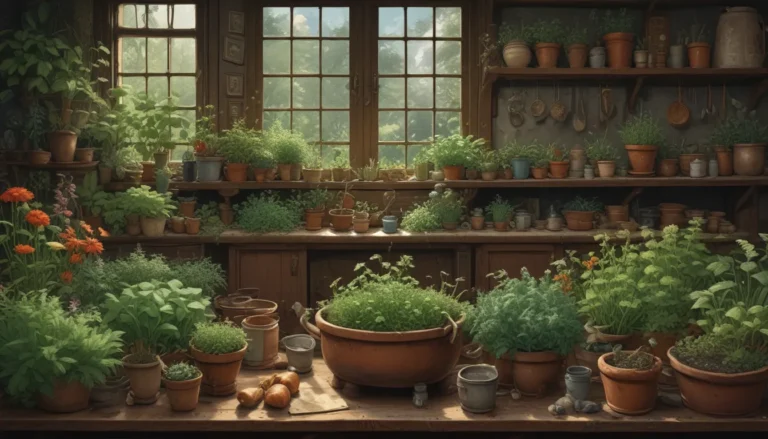Ultimate Guide to Growing Heath Asters

If you’re a plant enthusiast looking to add a touch of nature to your garden, look no further than the heath aster, Symphyotrichum ericoides. This beautiful flower, previously known as Aster ericoides, is native to central and eastern regions of the United States and Canada, often found along highways.
Belonging to the Asteraceae family, the same family as chamomile, dahlias, and zinnias, the heath aster thrives in USDA Hardiness Zones 3 to 10. With its copious tiny flowers that bloom from late summer to fall, including white, pink, and blue varieties, heath asters are a charming addition to any garden.
In this comprehensive guide, we will cover everything you need to know about growing heath asters at home. From propagation to pruning and maintenance, we’ll provide you with valuable tips and suggestions to help you cultivate healthy and vibrant heath asters in your garden.
What Is a Heath Aster?
Heath asters, also known as white heath asters, are wildflowers that exhibit a shrubby growth pattern, reaching mature heights of 12 to 36 inches and widths of 12 to 18 inches. These flowers can be found in rocky areas, gravel road and rail beds, and grassy prairies or “heaths.”
Characterized by sprays of composite flowers measuring half an inch or less in diameter, heath asters feature colorful rays surrounding a yellow center disk of florets. With narrow, linear, and sometimes slightly hairy leaves, heath asters come in various shades of green, and sometimes bronze.
There are two known varieties of heath asters: S. ericoides var. ericoides and S. ericoides var. pansum. While some named varieties may have distinct traits, they are not different enough to be considered separate species. Additionally, heath asters have been confused with other aster varieties, such as Pringle’s aster and aromatic aster.
Propagation
When it comes to propagating heath asters, you have several options to choose from:
From Seed
Starting from seed is a simple and cost-effective way to grow heath asters. You can either purchase seeds or harvest them from existing plants. Keep in mind that hybrids may not produce exact replicas of the parent plant.
To start from seed, you can either sow them indoors four weeks before the last spring frost or directly into the garden after the last spring frost. Provide adequate sunlight, water, and space for the seedlings to grow.
From Soft Stem Cuttings
Taking soft stem cuttings from mature plants is another way to propagate heath asters. Simply follow the instructions to encourage root growth and transplant the rooted cuttings into your garden.
By Division
Dividing mature plants that require thinning is a practical method of propagation. Divide the plants into individual sections and transplant them into prepared soil.
Transplanting Nursery Starts
Transplanting seedlings or mature plants from nurseries is a convenient way to start growing heath asters. Follow the steps to ensure successful establishment in your garden.
How to Grow
Choose a sunny location with well-draining, moisture-retentive soil that is organically rich. Keep in mind that heath asters prefer slightly acidic soil with a pH between 5.1 and 6.8. These plants have a higher tolerance for dry, rocky soil and clay due to their natural habitat conditions.
Monitor the water needs of young plants during the first year, providing approximately one inch of water per week. Established plants exhibit above-average drought tolerance but can benefit from supplemental watering during hot and dry periods.
Consider planting shorter companion plants in front of heath asters to hide their lower leaves, which may turn yellow and drop as they flower.
Growing Tips
To ensure the healthy growth of heath asters, consider the following tips:
- Provide full sun. – Use average to organically-rich soil with adequate moisture retention. – Fertilize as needed. – Maintain even moisture without oversaturation. – Opt for smaller companion plants to conceal the lower parts of the plant.
Pruning and Maintenance
Throughout the growing season, keep an eye out for pests and signs of disease. Prune infected or infested stalks and discard them properly. Prune leggy stalks and broken branches following proper techniques to promote healthy growth.
At the end of the season, consider cutting back foliage to the ground to prevent overwintering of mold spores. Apply a layer of mulch to insulate the crowns during the winter months. Every few years, divide heath asters to maintain their vitality and improve blooming.
Cultivars to Select
Choose from a variety of native species and cultivars of heath asters for your garden. Consider options such as Blue Star, Pink Cloud, and Snow Flurry for unique colors and growth habits. When selecting cultivars, be aware of their mature heights and characteristics to ensure they fit your garden’s design.
Managing Pests and Disease
Heath asters are susceptible to various pests and diseases, including aphids, leaf spot, and powdery mildew. Take proactive measures to prevent infestations and infections, such as attracting beneficial insects and selecting mildew-resistant cultivars. Consider using organic neem oil as a natural fungicide and insecticide to protect your plants.
Best Uses
Heath asters serve as excellent anchor plants in beds, providing a backdrop for smaller plantings and adding texture to your garden. They are ideal for single-specimen drifts, multi-species wildflower clearings, and rockeries due to their shallow roots and rugged nature. Compact cultivars are suitable for borders, cottage gardens, and containers, making them versatile additions to any landscape.
Quick Reference Growing Guide
Take a quick look at a summary of essential information about growing heath asters:
- Plant Type: Perennial flower – Flower / Foliage Color: White, pink, blue/green, bronze – Native to: Central and eastern United States and Canada – Tolerance: Clay, drought, poor soil – Hardiness (USDA Zone): 3-10 – Soil Type: Average to organically-rich – Bloom Time: Late summer to fall – Soil pH: 5.1-6.8 – Exposure: Full sun – Spacing: 12-18 inches – Attracts: Bees, butterflies, moths, other pollinators – Planting Depth: 1/8 inch (seeds), depth of root ball (transplants) – Height: 12-36 inches – Spread: 12-18 inches – Water Needs: Moderate – Maintenance: Moderate – Common Pests: Aphids, chrysanthemum lace bugs, cucumber beetles, leaf miners, nematodes, slugs, snails, Tarsenoid mites – Common Diseases: Aster yellows, leaf spot, powdery mildew, rust, stem canker, white smut
Conclusion
Heath asters are a delightful addition to any garden, providing bursts of tiny white blooms and attracting beneficial pollinators. By following the comprehensive guide on growing heath asters, you can enhance your landscape with these charming flowers. Whether you choose to propagate from seed, cuttings, or divisions, or opt for nursery starts, heath asters are versatile and rewarding plants to grow.
If you’re a fan of perennial asters, consider exploring other varieties such as Calico Asters or New York Asters to diversify your garden. Share your experiences and favorite asters in the comments below, and let us know how you plan to incorporate heath asters into your garden this season. Happy gardening!





